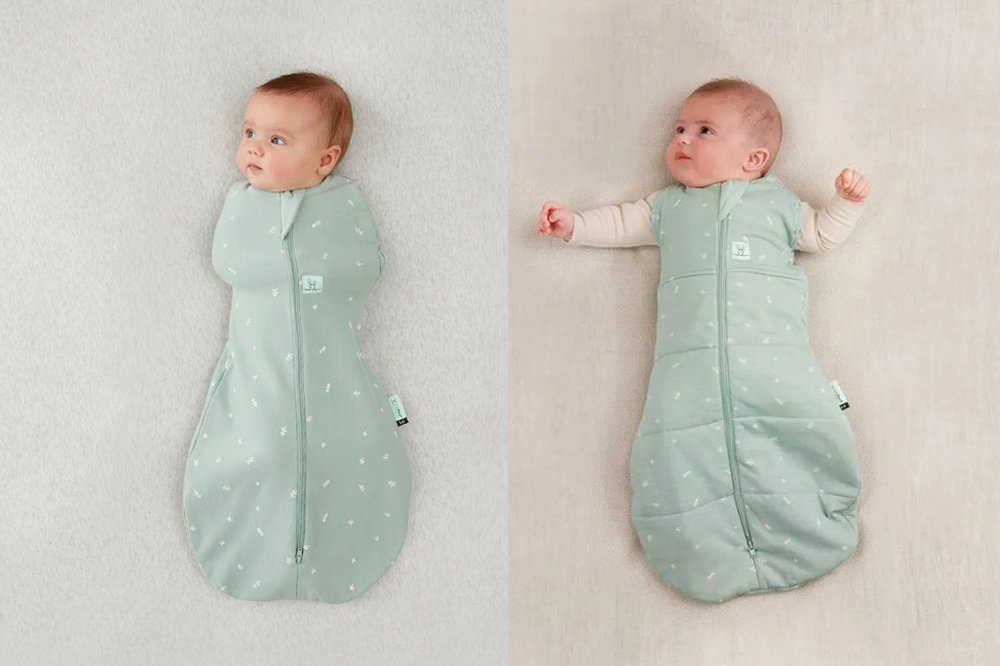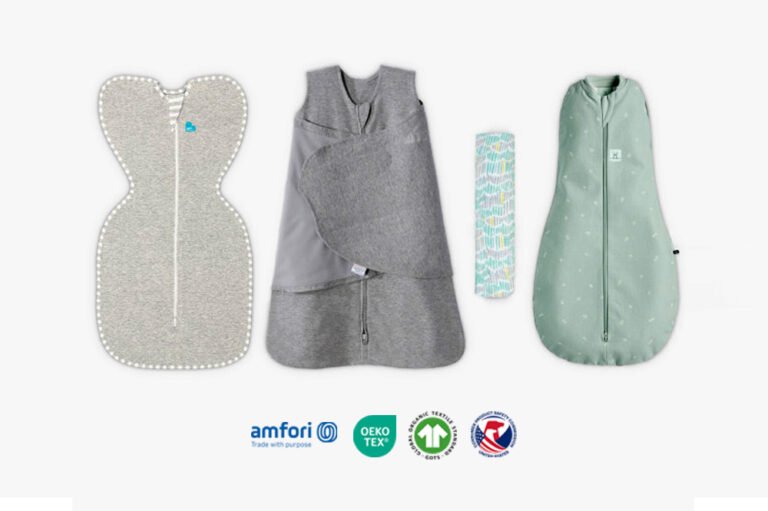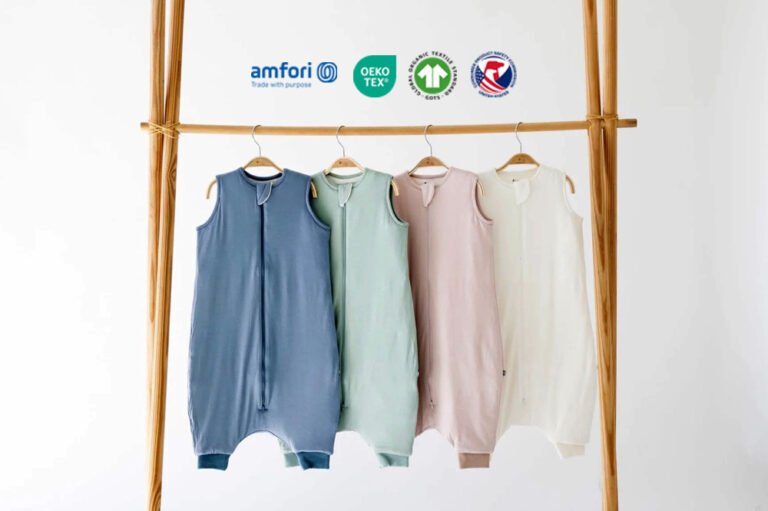
Introduction
Transitioning from swaddle to sleep sack is a crucial phase in a baby’s early life. This article will provide an in-depth guide for parents on how to make this transition smoothly and effectively.
Importance of the Topic
The transition from swaddling to using a sleep sack is a significant milestone for both parents and babies. Understanding the process and benefits can help ensure a safe and comfortable sleeping environment for your child.
Purpose of the Article
Our goal is to equip parents with the knowledge and strategies needed to make this transition as seamless as possible. We will cover everything from the basics of swaddling to practical tips for choosing and using sleep sacks.
What is Swaddling?
Definition of Swaddling
Swaddling is the practice of wrapping a baby snugly in a blanket or cloth to restrict movement and mimic the warmth and security of the womb. This technique has been used for centuries to help babies sleep better.
Historical Background of Swaddling
Swaddling has a rich history dating back to ancient civilizations. It was a common practice in many cultures, including the Egyptians and Greeks, and has evolved over time with modern variations to enhance safety and comfort.
Benefits of Swaddling
Swaddling offers several benefits:
- Enhanced Sleep: Swaddling can help babies sleep more soundly by reducing the startle reflex that often wakes them up.
- Security: The snug feeling of a swaddle can provide a sense of security and comfort, similar to being in the womb.
- Soothe Crying: Swaddling can soothe a fussy baby and reduce crying episodes.
Drawbacks of Swaddling
Risks of Over-dependence
Over-reliance on swaddling can lead to difficulties when transitioning to other sleep methods. Babies can become dependent on the swaddle to fall asleep.
Potential Health Issues
Improper swaddling can lead to health issues such as hip dysplasia and overheating. It is essential to swaddle correctly to avoid these risks.
When to Start Considering the Transition?
Optimal Timing for the Transition
The ideal time to transition from swaddle to sleep sack is when your baby shows signs of rolling over, typically between 3 to 6 months of age. At this stage, swaddling can become a safety hazard.
Developmental Signs in Babies
Signs that your baby is ready to transition include:
- Increased Mobility: Rolling over or attempting to roll over.
- Less Startle Reflex: Decreased frequency of startling during sleep.
- Restlessness: Trying to break out of the swaddle or showing discomfort.
Why Transition from Swaddle to Sleep Sack?
Safety Aspects of Sleep Sacks
Sleep sacks are designed to keep your baby warm without the risks associated with loose blankets. They allow free movement of the legs and hips, reducing the risk of hip dysplasia.
Benefits for Baby Development
Using a sleep sack can promote better sleep habits and independence. It helps babies learn to self-soothe and move more freely, which is important for their physical development.
Choosing the Right Sleep Sack
Types of Sleep Sacks
There are various types of sleep sacks available, including:
- Wearable Blankets: Standard sleep sacks that are worn like a vest.
- Transitional Sleep Sacks: Designed for babies who are transitioning from swaddling, often with features like detachable wings.
- Weighted Sleep Sacks: These provide gentle pressure to help calm babies.
Material Selection
Choose materials that are breathable and suitable for the climate. Cotton and muslin are popular choices for their softness and breathability.
Size and Safety Considerations
Ensure the sleep sack fits your baby properly. It should be snug around the neck and arms to prevent slipping but spacious enough for free movement of the legs.
How to Transition Smoothly
Gradual Methods
Start by swaddling your baby with one arm out, then gradually move to both arms out. This allows your baby to adjust slowly to the new sleep environment.
Creating a Comfortable Sleep Environment
Maintain a consistent bedtime routine to provide a sense of security. Use white noise, a dark room, and a familiar bedtime routine to create a comforting sleep environment.
Maintaining Consistency
Consistency is key. Stick to the routine and be patient. It may take a few nights for your baby to adjust fully.
Common Problems and Solutions
Baby Resisting the Sleep Sack
If your baby resists the sleep sack, try introducing it during nap times first. This gradual introduction can help them get used to the new sleepwear.
Handling Night Wakings
Night wakings are common during transitions. Offer comfort and reassurance, but avoid reintroducing the swaddle. Consistency will help your baby adjust.
Success Stories
Real-life Transition Experiences
Many parents have successfully transitioned their babies from swaddle to sleep sack. Here are a few insights:
- Sarah from New York: “We started the transition by using a transitional sleep sack with wings. Our baby adjusted within a week and now sleeps soundly through the night.”
- Mike from California: “Consistency was key for us. We maintained our bedtime routine and gradually moved to a sleep sack. The process took about two weeks, but it was worth it.”
Insights from Parents
Parents often emphasize the importance of patience and consistency. Every baby is different, and it’s essential to stay calm and supportive throughout the transition.
Conclusion
Recap of Key Points
Transitioning from swaddle to sleep sack is an important step in your baby’s development. By choosing the right sleep sack, maintaining a consistent routine, and being patient, you can ensure a smooth transition.
Encouragement for Parents
Remember, every baby is unique. The transition period may vary, but with the right approach, your baby will soon adapt to the new sleeping arrangement.
FAQs
How do I know my baby is ready to transition from swaddle to sleep sack?
Look for signs such as increased mobility, decreased startle reflex, and restlessness in the swaddle.
Can I switch directly from swaddle to blanket?
It's not recommended due to the risk of suffocation. Sleep sacks are a safer alternative.
What if my baby sleeps poorly in the sleep sack?
Maintain consistency and give your baby time to adjust. Try using the sleep sack during naps first.
How long does the transition period take?
The transition period can vary from a few days to a few weeks, depending on your baby’s adaptability.
How to keep my baby safe after transitioning to a sleep sack?
Ensure the sleep sack fits properly and is made of breathable material. Keep the sleep environment safe and free of loose blankets.






